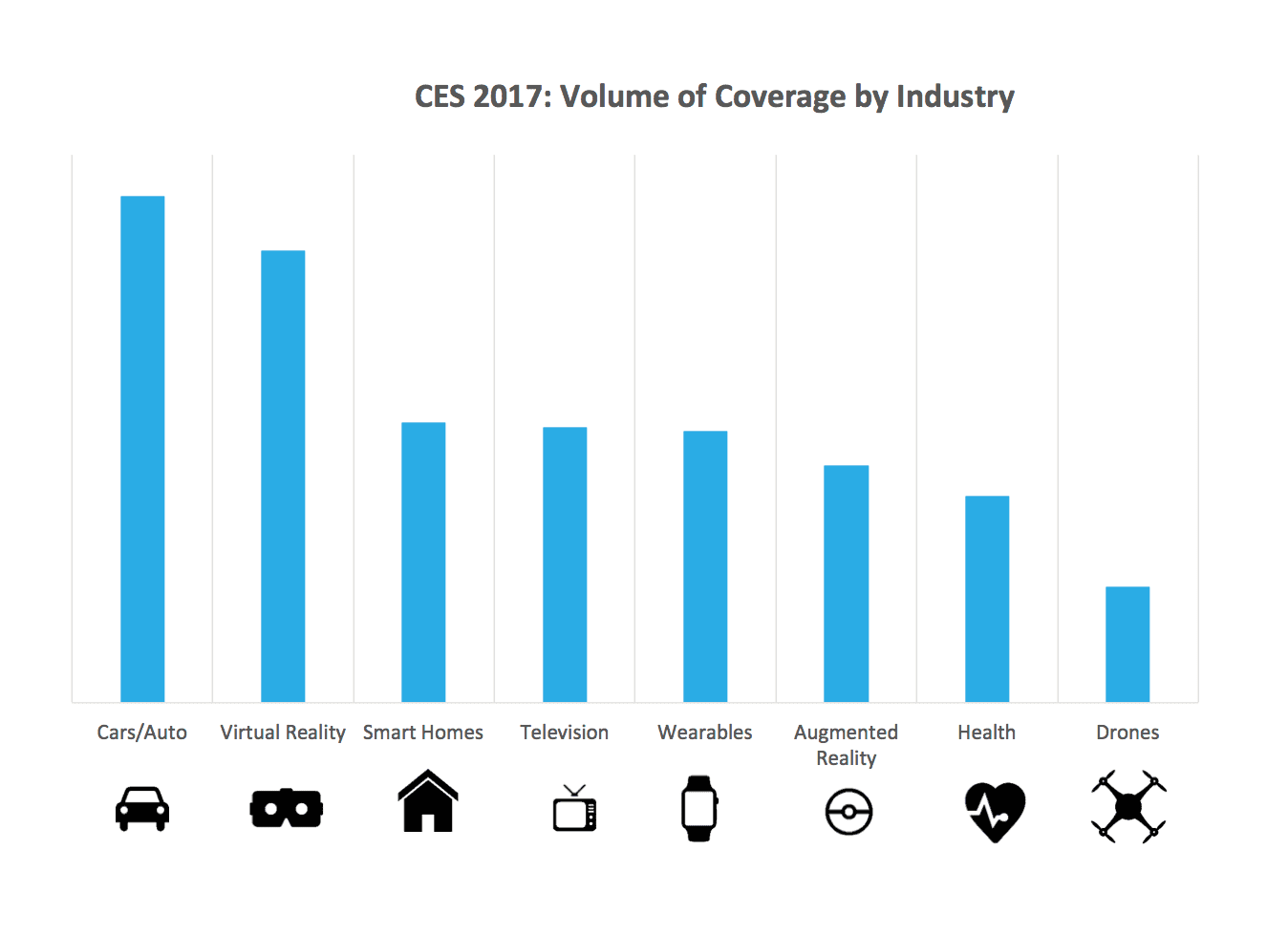As the dust settles on the 50th Consumer Electronics Show in Las Vegas earlier this month, the post-show reviews and recaps have been pouring in.
Did automotive brands steal the show – again – this year? Did the CEA strategy of attracting traditionally non-technology brands to join the throng pay off in widening its appeal? Did attendees get their fill of super thin TVs, smart kitchen appliances, and the latest advances in virtual reality and drones?
The answer to all of the above is both yes, and no. An analysis of the coverage coming out of the event reveals that yes, automotive brands did lead the coverage charts, but with virtual reality not far behind. Smart home, TVs and wearable tech were all in hot pursuit. Reporters duly traipsed from keynote to show floor to demo suite, doing their best to capture the biggest news of the week. And major brands and media groups alike competed to throw the most attractive after-hours events up and down the Las Vegas Strip.

Analysis courtesy of KGRA
But when all was said and done, it struck me that the biggest innovations were less about the hardware itself – the speed and feeds, the bits and bytes – and more about how we as consumers interact with technology, and with the brands behind it.
Voice control was clearly the medium of choice, with brands tripping over themselves to demonstrate their capabilities on the noisy show floor. Alongside voice grew the concept of who owns the operating system, or the hub, on which (and through which) other devices will communicate.
This to me was the biggest innovation at CES 2017: more than ever before, technology brands seemed to be really starting to think about the holistic consumer experience, end to end, in a way that is finally edging us closer to the connected lifestyle we have talked of and aspired to for so long.
This marks a significant shift for the consumer electronics industry. The brands that want to earn their place in our living rooms, kitchens and cars, now also want to become the gateway to the wider world. They are no longer content to be static productivity or entertainment tools; they want to be our interface to the world beyond the home or the car, continuing to engage with us, and build knowledge of our likes and preferences, long after that first installation.
It’s also a shift for marketers and communicators. Understanding that we are no longer simply selling technology, but rather experiences, is only part of the equation. The other is that the very technologies we sell are becoming the communications channels of the future. Smart homes, connected cars, virtual reality – every piece of technology that a person touches becomes a part of their consumer profile and, potentially, a part of the tapestry of media channels that brands will use to engage.
Winning at CES is about more than share of voice and owning the conversation in that all important first week of January. It’s about seizing the opportunity to look into the industry’s crystal ball, and identifying the technologies that will become the communications and storytelling tools of tomorrow.
There’s no doubt that CES will continue to be a venue to introduce and sell new technologies well beyond its 50th year. But the brands that really shine through will be those that capture the power of those new technologies to tell their own stories.
